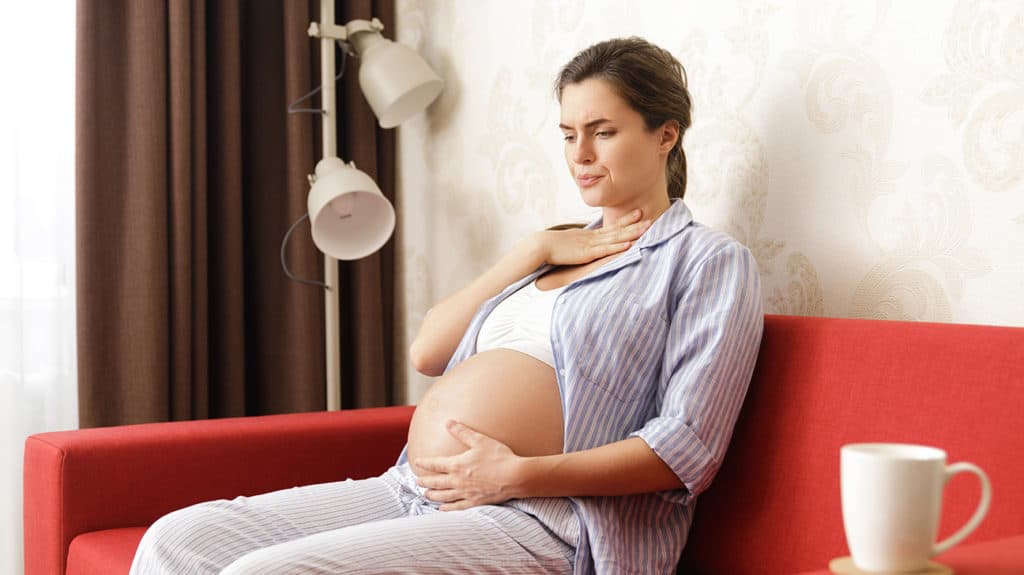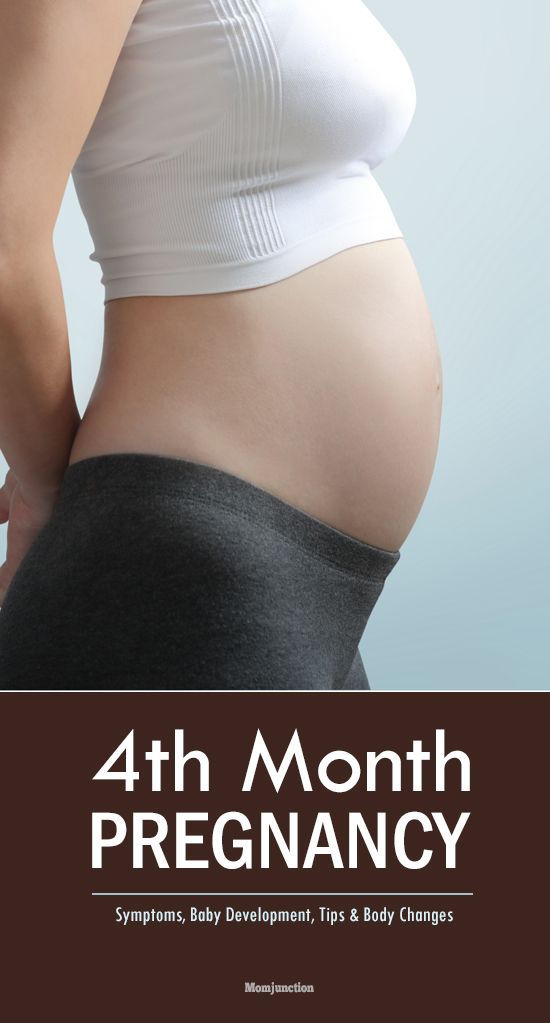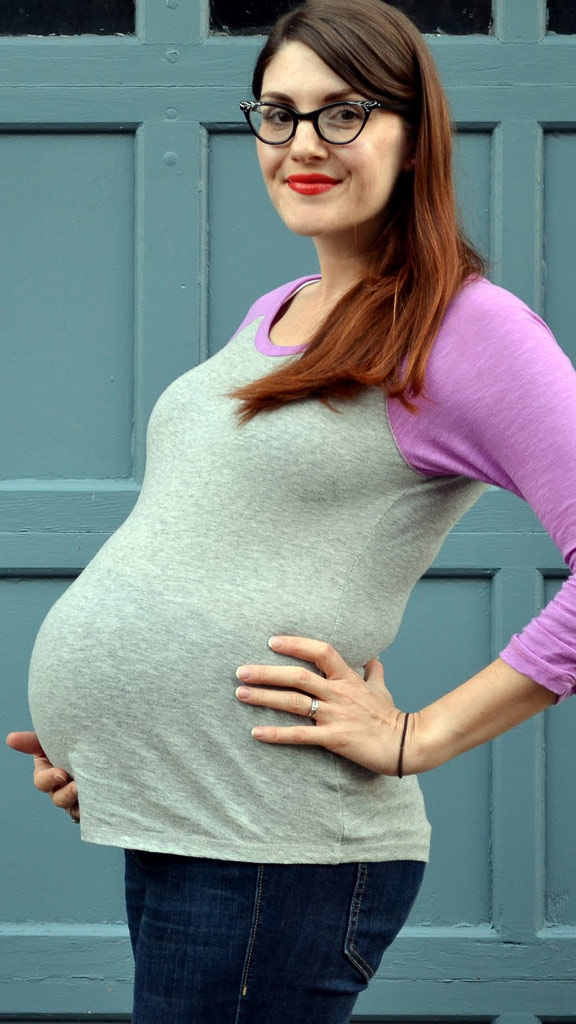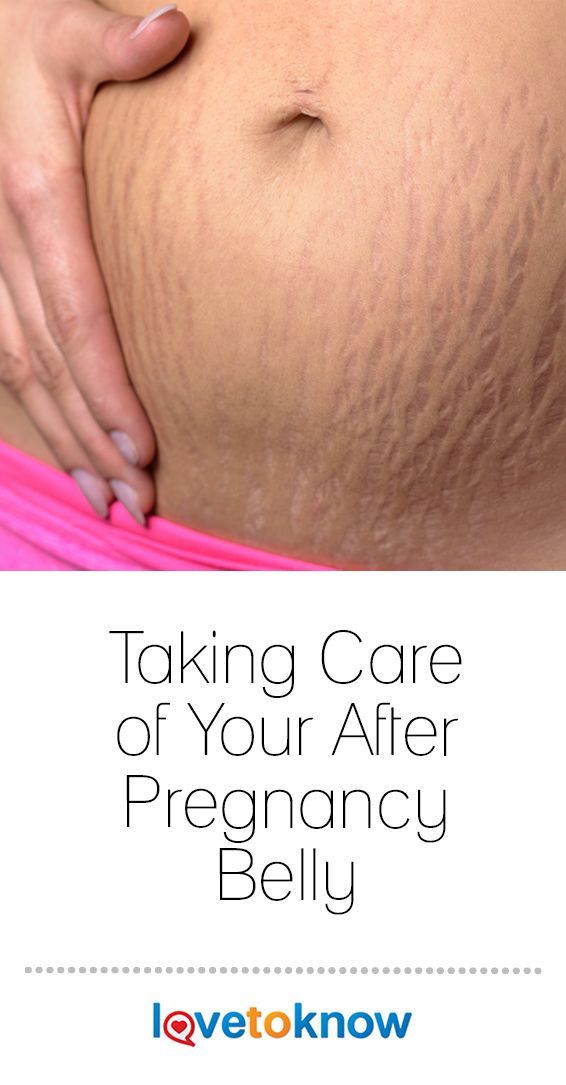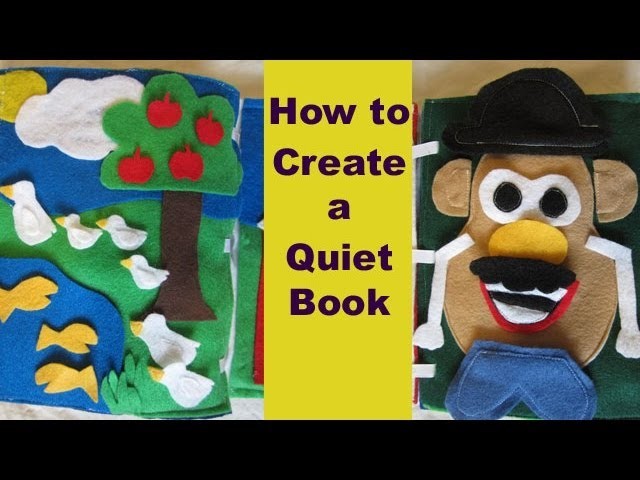Baby sleeping habit
Baby sleep: what to expect at 2-12 months
Baby sleep needs
Babies need sleep to grow and develop well. But babies’ sleep needs vary, just as the sleep needs of older children and adults do. Your baby might be doing well with more or less sleep than other babies the same age.
Your baby’s mood and wellbeing is often a good guide to whether your baby is getting enough sleep. If your baby is:
- wakeful and grizzly, they might need more sleep
- wakeful and contented, they’re probably getting enough sleep.
How baby sleep changes from 2 to 12 months
As they get older, babies:
- sleep less in the daytime
- are awake for longer between naps
- have longer night-time sleeps and wake less at night
- need less sleep overall.
2-3 months: what to expect from baby sleep
At this age, babies sleep on and off during the day and night. Most babies sleep for 14-17 hours in every 24 hours.
Young babies sleep in cycles that last 50-60 minutes. In young babies, each cycle is made up of active sleep and quiet sleep. Babies move around and grunt during active sleep, and sleep deeply during quiet sleep.
At the end of each cycle, babies wake up for a little while. They might grizzle or cry. They might need help to settle for the next sleep cycle.
At 2-3 months, babies start developing night and day sleep patterns. This means they tend to start sleeping more during the night.
Around 3 months: what to expect from baby sleep
Babies keep developing night and day sleep patterns.
Their sleep cycles consist of:
- light sleep, when baby wakes easily
- deep sleep, when baby is sound asleep and very still
- dream sleep, when baby is dreaming.
Sleep cycles also get longer, which might mean less waking and resettling during sleep. At this age, some babies might regularly be having longer sleeps at night – for example, 4-5 hours.
Most babies still sleep for 14-17 hours in every 24 hours.
3-6 months: what to expect from baby sleep
At this age, most babies sleep for 12-15 hours every 24 hours.
Babies might start moving towards a pattern of 2-3 daytime sleeps of up to two hours each.
And night-time sleeps get longer at this age. For example, some babies might be having long sleeps of six hours at night by the time they’re six months old.
But you can expect that your baby will still wake at least once each night.
6-12 months: what to expect from baby sleep
Babies sleep less as they get older. By the time your baby is one year old, baby will probably sleep for 11-14 hours every 24 hours.
Sleep during the night
From about six months, most babies have their longest sleeps at night.
Most babies are ready for bed between 6 pm and 10 pm. They usually take less than 40 minutes to get to sleep, but some babies take longer.
At this age, baby sleep cycles are closer to those of grown-up sleep – which means less waking at night. So your baby might not wake you during the night, or waking might happen less often.
But many babies do wake during the night and need an adult to settle them back to sleep. Some babies do this 3-4 times a night.
Sleep during the day
At this age, most babies are still having 2-3 daytime naps that last for between 30 minutes and 2 hours.
6-12 months: other developments that affect sleep
From around six months, babies develop many new abilities that can affect their sleep or make them more difficult to settle:
- Babies learn to keep themselves awake, especially if something interesting is happening, or they’re in a place with a lot of light and noise.
- Settling difficulties can happen at the same time as crawling. You might notice your baby’s sleep habits changing when baby starts moving around more.
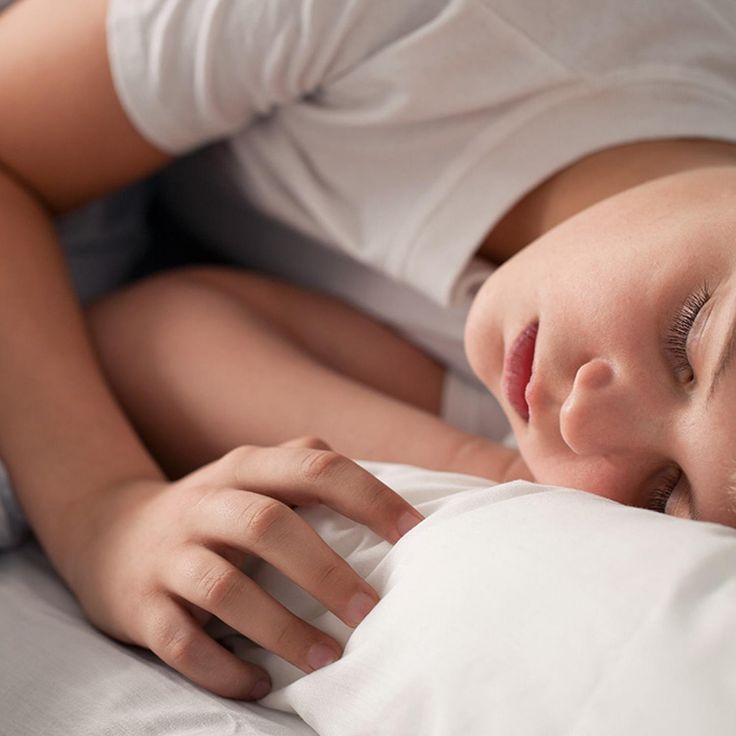
- Babies learn that things exist, even when they’re out of sight. Now that your baby knows you exist when you leave the bedroom, baby might call or cry out for you.
- Separation anxiety is when babies get upset because you’re not around. It might mean your baby doesn’t want to go to sleep and wakes up more often in the night. As babies mature they gradually overcome this worry.
6-12 months: night-time feeding
From around six months of age, if your baby is developing well, it’s OK to think about night weaning and phasing out night feeds. But if you’re comfortable with feeding your baby during the night, there’s no hurry to phase out night feeds.
You can choose what works best for you and your baby.
A rollover feed is a late feed somewhere between 10 pm and midnight. Some parents find that rollover feeds help babies sleep longer towards morning. If this works for you and your baby, it’s fine to give baby a rollover feed.
Concerns about baby sleep
If you’re concerned about your baby’s sleep, it can be a good idea to track your baby’s sleep for a week or so.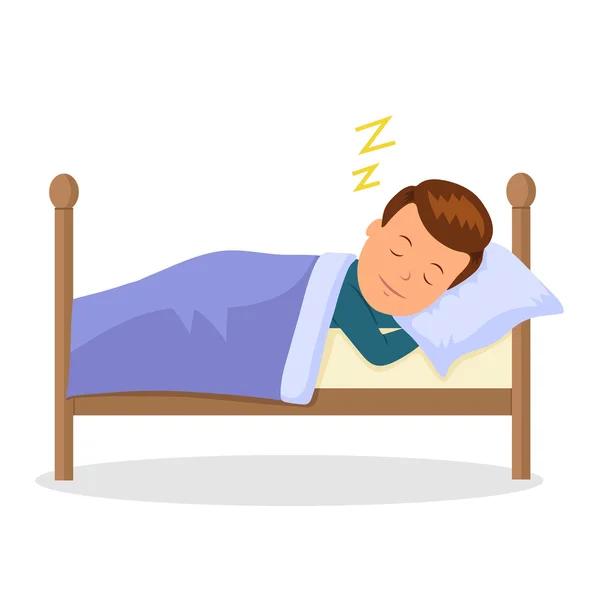 This can help you get a clear picture of what’s going on.
This can help you get a clear picture of what’s going on.
You can do this by drawing up a simple chart with columns for each day of the week. Divide the days into hourly blocks, and colour the intervals when your baby is asleep. Keep your chart for 5-7 days.
Once completed, the chart will tell you things like:
- when and how much sleep your baby is getting
- how many times your baby is waking during the night
- how long your baby is taking to settle after waking.
You can also record how you tried to resettle your baby and what worked or didn’t work.
Then you can compare the information in your chart with the general information about baby sleep needs above:
- How does your child compare to other babies the same age? If your baby is wakeful and grizzly and getting much less sleep than others, your baby might need more opportunities for sleep.
- How many times is your baby over six months old waking up during the night? If it’s 3-4 times a night or more, you might be feeling very tired.
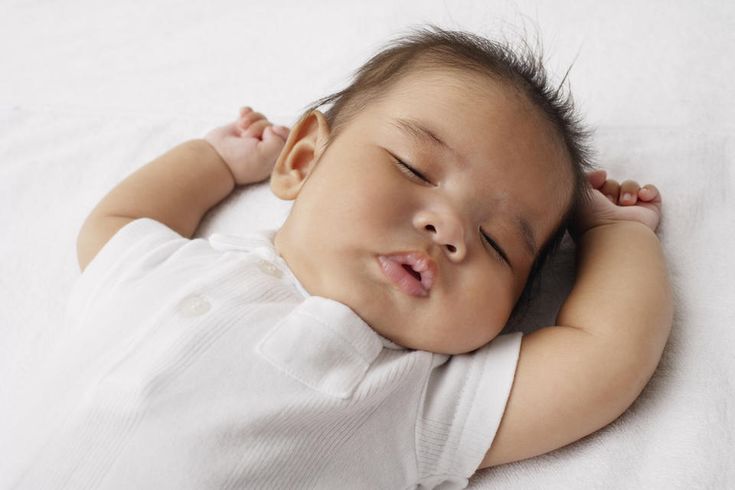 You might want to think about phasing out some of your baby’s sleep habits.
You might want to think about phasing out some of your baby’s sleep habits.
If you decide you need to see a professional for help with your baby’s sleep, take your chart with you.
If you’re concerned about your baby’s sleep, it’s a very good idea to see a child health professional for help. You could start by talking with your GP or child and family health nurse.
How baby sleep patterns affect grown-ups
Babies and grown-ups need sleep for wellbeing, but babies sleep differently from adults. Most parents of babies under six months of age get up in the night to feed and settle their babies. For many, this keeps going after six months.
Some parents are OK with getting up a lot at night as long as they have enough support and they can catch up on sleep at other times. For others, getting up in the night over the long term has a serious effect on them and their family lives.
The quality of your sleep can affect your health and your mood. Being exhausted can make it hard to give your baby positive attention during the day.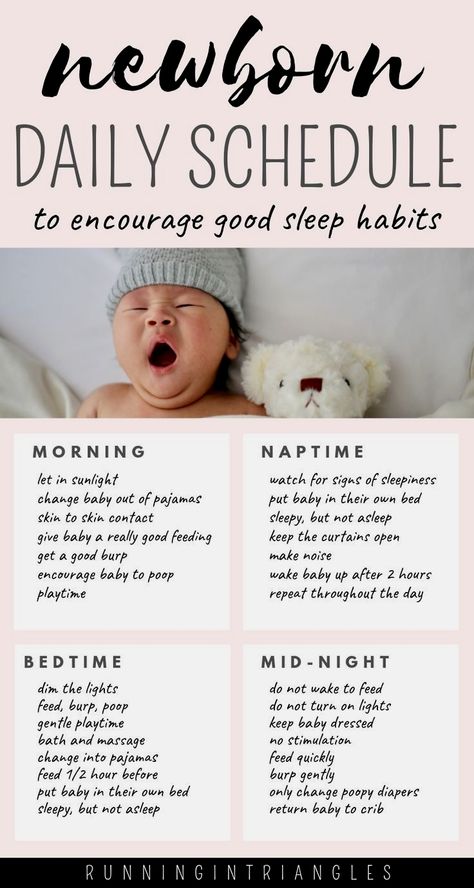 And your relationship with your baby and the time and attention you give baby during the day can affect the quality and quantity of baby’s sleep.
And your relationship with your baby and the time and attention you give baby during the day can affect the quality and quantity of baby’s sleep.
So it’s important that you get some help if you’re not getting enough sleep. You could start by asking family or friends for help. And if you feel that lack of sleep is affecting you mentally or emotionally, it’s a very good idea to talk with your GP or another health professional.
There’s a strong link between baby sleep difficulties and symptoms of postnatal depression in women and postnatal depression in men. But the link isn’t there if parents of babies with sleep difficulties are getting enough sleep themselves.
Languages other than English
- Arabic (PDF: 471kb)
- Dari (PDF: 469kb)
- Karen (PDF: 298kb)
- Persian (PDF: 420kb)
- Simplified Chinese (PDF: 502kb)
- Vietnamese (PDF: 324kb)
Baby sleep patterns by age
Baby sleep patterns by age | Pregnancy Birth and Baby beginning of content4-minute read
Listen
Babies have different sleep patterns. Some take long day naps while others only have quick naps. Some wake up frequently through the night while others may sleep through or wake up occasionally. Their sleep patterns can also change a lot in the first year. While each baby is different, it may help you to understand how babies' sleep cycles differ from those of adults and also what to expect at each stage.
Some take long day naps while others only have quick naps. Some wake up frequently through the night while others may sleep through or wake up occasionally. Their sleep patterns can also change a lot in the first year. While each baby is different, it may help you to understand how babies' sleep cycles differ from those of adults and also what to expect at each stage.
Normal baby sleep versus adult sleep
Babies under 1 are naturally lighter sleepers compared with adults. They spend more of their sleeping time in 'active sleep' instead of 'quiet sleep'.
In active sleep, babies breathe shallowly and twitch their arms and legs. Their eyes flutter under their eyelids. Babies can be easily woken up from active sleep.
By comparison, adults and adolescents tend to have more quiet sleep, where they lie still and breathe deeply.
Everybody has a cycle, where their sleep varies from light to deep. Adults' sleep cycles are usually about 90 minutes. Babies' sleep cycles are usually about 40 minutes, so they tend to wake up more often.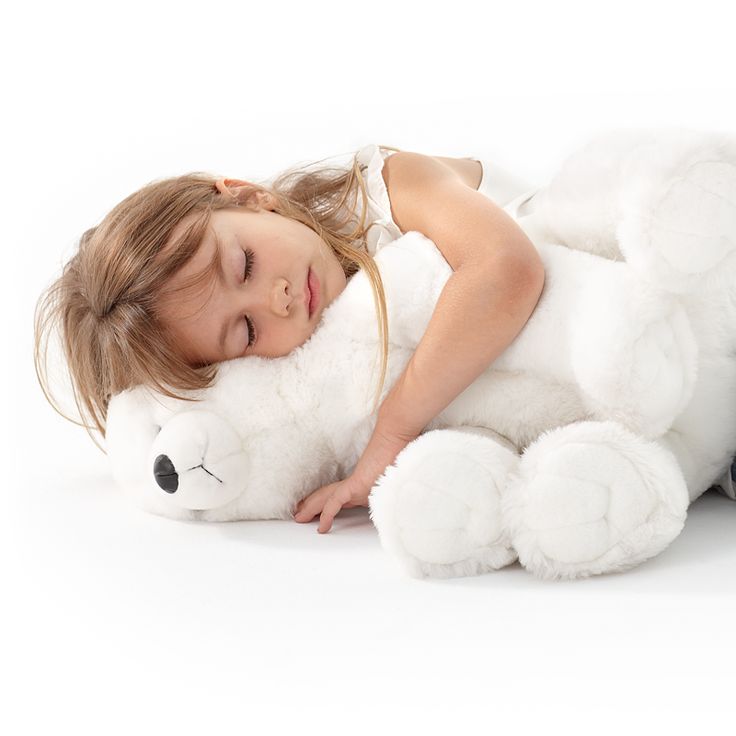
All babies are different
Babies are little individuals so they are all different. The information below is a general guide and your baby might be different. Try not to spend too much time comparing how your baby sleeps with other babies. For advice or support at any time, call Pregnancy, Birth and Baby on 1800 882 436.
Birth to 3 months
- Newborns sleep on and off through the day and night.
- The total sleep varies between babies — it can be from around 8 to 18 hours a day.
- They tend to sleep only in short stretches because they need to be fed and changed regularly.
- Newborns generally sleep very lightly: they spend half of their sleeping time in active sleep.
- Also, a newborn has not learnt to sleep when it is dark. They usually start to learn this rhythm of day and night when they are about 6 weeks old. You can help your newborn to learn to sleep more at night by exposing them to light and playing with them during the day, and providing a dim and quiet environment at night.
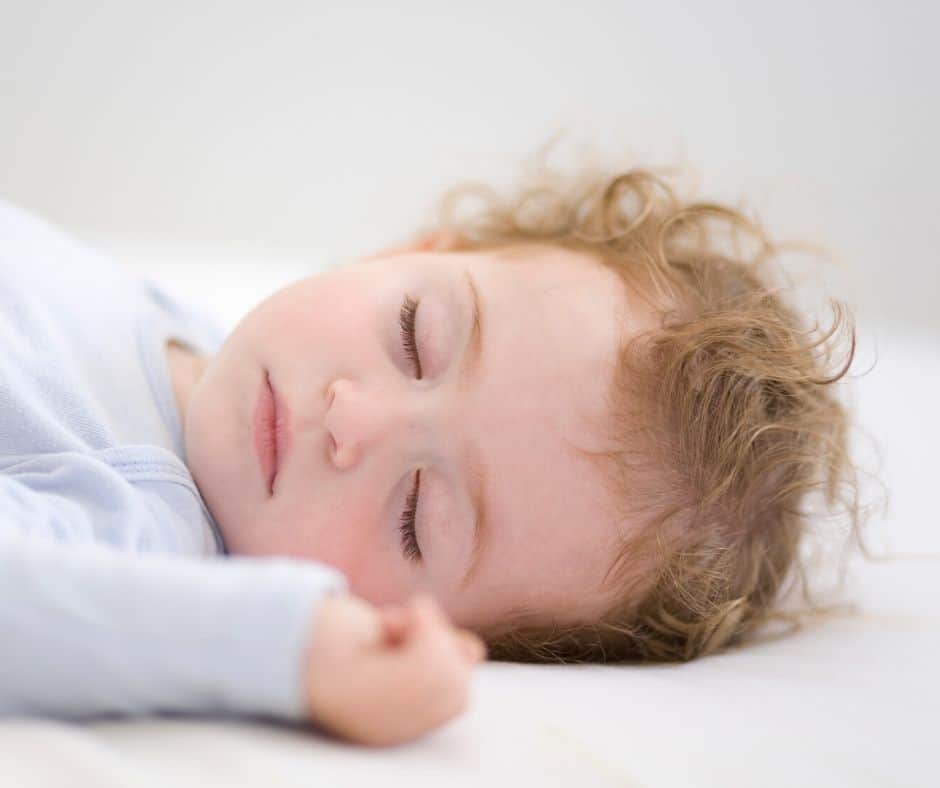
Three to 6 months
- At this age, your baby might have 3 daytime naps of up to 2 hours each.
- Most will sleep 14 to 15 hours of sleep in total a day, with some babies sleeping up to 8 hours at night.
- The amount of active sleep starts to reduce and they begin to enter quiet sleep at the beginning of their sleep cycles.
- They still tend to wake up at least once during the night.
Six to 12 months
- From about 6 months old, your baby's sleep patterns are more like yours.
- At this age, babies sleep an average of about 13 hours in total a day. They tend to sleep the longest period at night, averaging about 11 hours.
- Your baby will start dropping their number of daytime naps to about 2. Their naps are usually about 1 to 2 hours.
- In general, babies may wake up less frequently during the night because they do not need to be fed as often.
- Most babies will wake only once during the night and need settling back to sleep.
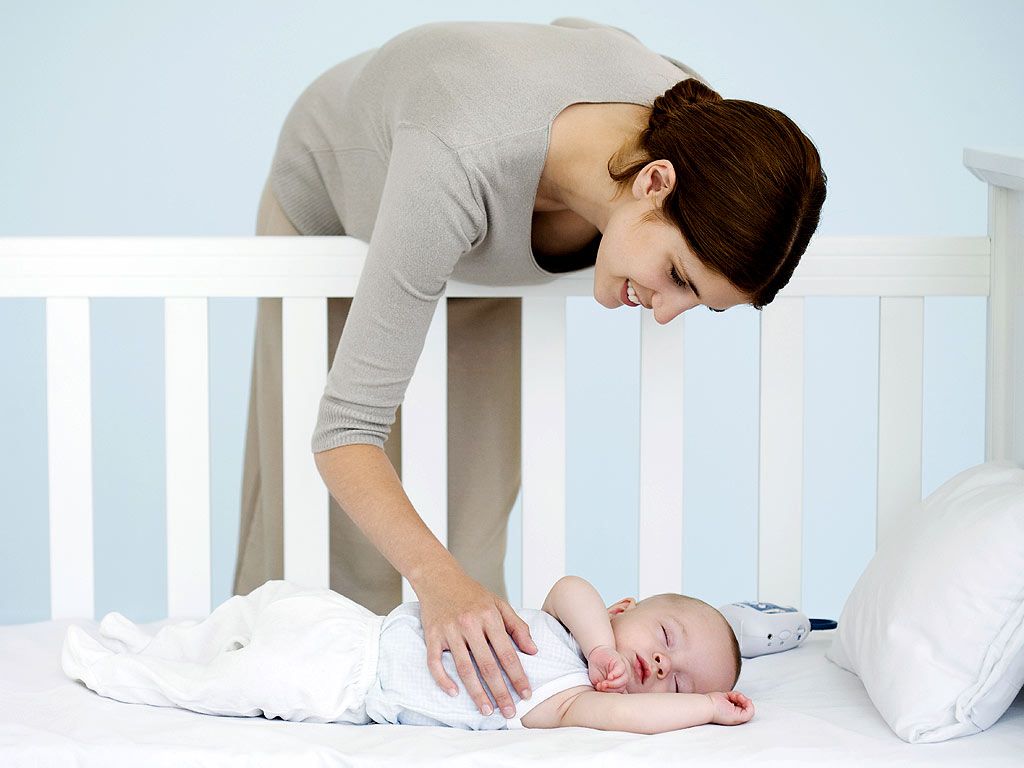 Some will still wake up more often.
Some will still wake up more often. - At this age, babies may start to worry about being away from their parent or carer. This may make it longer for babies to fall asleep and may temporarily increase night wakings.
- Regular daytime and bedtime routines may help your baby to fall and stay asleep.
After 12 months
- From 12 months old, babies tend to sleep better. As they approach their first birthday, babies tend to sleep longer, wake up less often, take a nap once or twice during the day and sleep more at night. By the time they turn 1 year old, babies are likely to be sleeping 8 to 12 hours a night, waking only once or twice in that time.
Sources:
National Sleep Foundation (Children and sleep), Pregnancy, Birth and Baby (Getting your baby to sleep), Raising Children Network (Sleep needs for babies), Raising Children Network (Baby sleep: 2-12 months), Journal of Paediatrics and Child Health (Teng A et al - Infant and toddler sleep in Australia and New Zealand (2012;48:268-73))Learn more here about the development and quality assurance of healthdirect content.
Last reviewed: January 2021
Back To Top
Related pages
- Safe sleep for babies
- Getting your baby to sleep
- Your baby’s growth and development – first 12 months
Need further advice or guidance from our maternal child health nurses?
1800 882 436
Video call
- Contact us
- About us
- A-Z topics
- Symptom Checker
- Service Finder
- Linking to us
- Information partners
- Terms of use
- Privacy
Pregnancy, Birth and Baby is funded by the Australian Government and operated by Healthdirect Australia.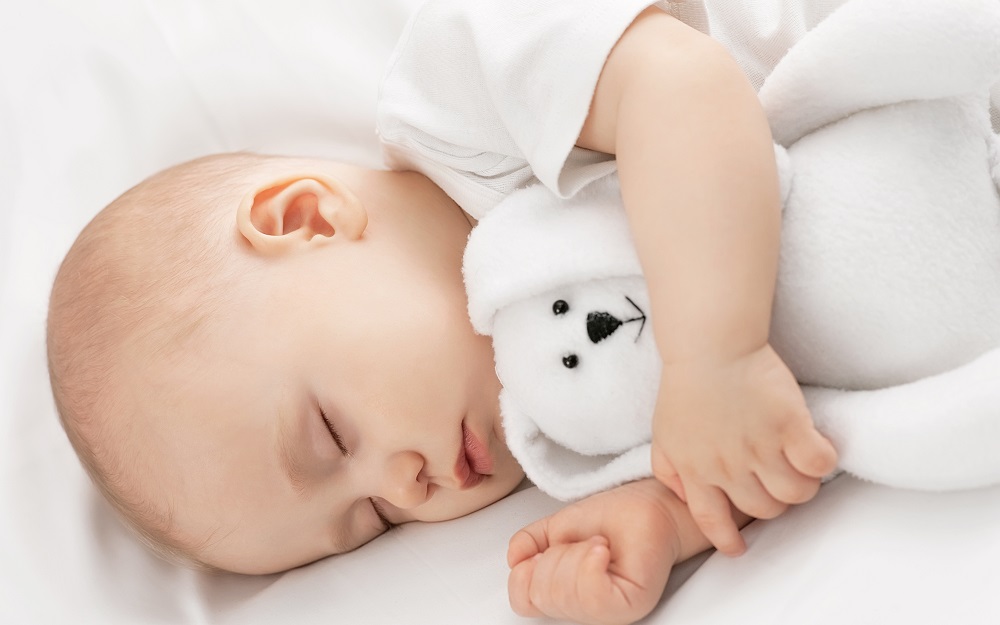
Pregnancy, Birth and Baby is provided on behalf of the Department of Health
Pregnancy, Birth and Baby’s information and advice are developed and managed within a rigorous clinical governance framework. This website is certified by the Health On The Net (HON) foundation, the standard for trustworthy health information.
This site is protected by reCAPTCHA and the Google Privacy Policy and Terms of Service apply.
This information is for your general information and use only and is not intended to be used as medical advice and should not be used to diagnose, treat, cure or prevent any medical condition, nor should it be used for therapeutic purposes.
The information is not a substitute for independent professional advice and should not be used as an alternative to professional health care. If you have a particular medical problem, please consult a healthcare professional.
Except as permitted under the Copyright Act 1968, this publication or any part of it may not be reproduced, altered, adapted, stored and/or distributed in any form or by any means without the prior written permission of Healthdirect Australia.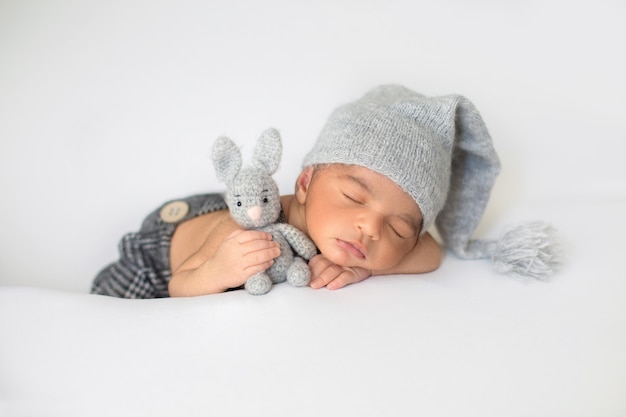
Support this browser is being discontinued for Pregnancy, Birth and Baby
Support for this browser is being discontinued for this site
- Internet Explorer 11 and lower
We currently support Microsoft Edge, Chrome, Firefox and Safari. For more information, please visit the links below:
- Chrome by Google
- Firefox by Mozilla
- Microsoft Edge
- Safari by Apple
You are welcome to continue browsing this site with this browser. Some features, tools or interaction may not work correctly.
Putting the child to sleep: useful tips and recommendations
Author, editor and medical expert - Muraeva Yulia Yurievna.
Views: 195 704
Last update date: 06/23/2022 G.
average reading time: 12 minutes
Content:
Rhythm of children's sleep
How to properly laid it out properly sleep baby
How to help your baby sleep
How to teach a child to sleep in his own crib?
Bedtime rituals
What are the bedtime rituals?
Sleep is an important part of life, so it must be regular and of high quality 1 .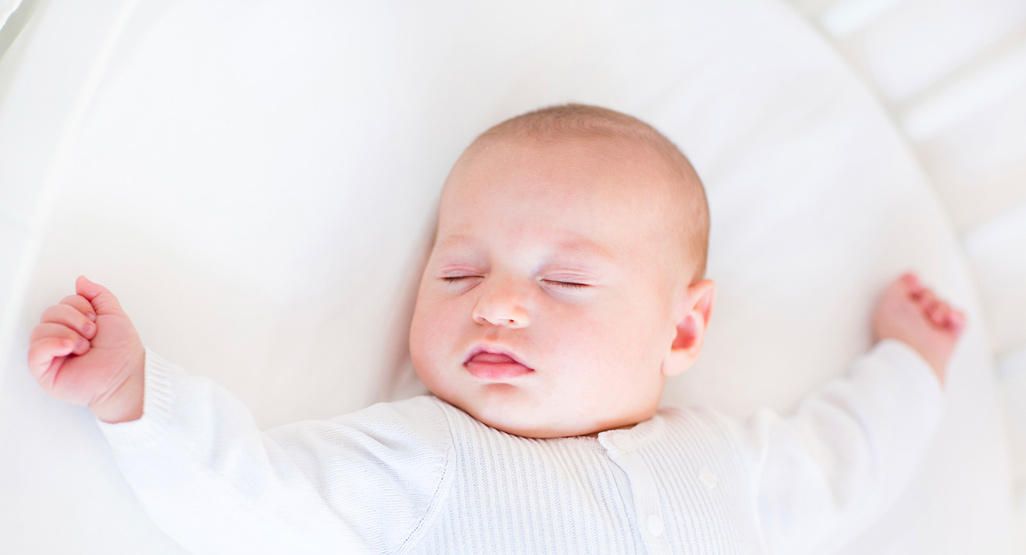 But often the first year of a child's life becomes a real test for parents. Even such a seemingly simple action as putting a newborn to sleep sometimes turns into a task of increased complexity.
But often the first year of a child's life becomes a real test for parents. Even such a seemingly simple action as putting a newborn to sleep sometimes turns into a task of increased complexity.
The difficulty is that in infants, sleep is still being formed, and circadian rhythms differ from those to which parents are accustomed 2 .
Rhythms of baby sleep
Before birth, the alternation of sleep phases in the fetus is subject to circadian (daily) rhythms and fluctuations in the hormonal background of the expectant mother. After giving birth, it takes time for the child to mature its own regulatory system 2 .
A term newborn sleeps an average of 16-17 hours 2 , and the total duration of sleep is not affected by dark and daylight hours 3 .
Babies up to 2 months have 2 sleep phases 2.3 :
- Active sleep. Starts after falling asleep. This phase is important for the stimulation and development of the central nervous system.
 During active sleep, you can observe the baby's mobility, rapid eye movements and a weakening of reactions to external stimuli (light, sound, touch).
During active sleep, you can observe the baby's mobility, rapid eye movements and a weakening of reactions to external stimuli (light, sound, touch). - Peaceful sleep. Follows the active phase. During restful sleep, the heart rate slows down, the movements of the eyeballs stop, and the baby stops moving his arms and legs.
Together these 2 phases form a cycle. Each cycle begins with active sleep followed by restful sleep. The duration of such a cycle is approximately 45-60 minutes 3 .
But the sleep-wake cycle lasts longer. For breastfed babies, it is approximately 1-3 hours, and for artificial babies, it is 2-5 hours 3 .
Gradually lengthening periods of wakefulness, and most of the sleep occurs at night 2 :
- By the end of 3 months of life, an uninterrupted night's sleep can be about 5 hours 3 .
- From 2 to 12 months, babies sleep 9-10 hours at night 3 , while daytime sleep is divided into 1-4 episodes that can last from 30 minutes to 2 hours 3 .

Sleep regularity and sleep disturbances can be assessed after 6 months, when the child develops circadian rhythms 3 .
Although the night sleep becomes longer, each cycle is still accompanied by micro-awakenings (wakings) 2.3 , after which the baby can fall asleep quickly enough. This is a short-term activation of the central nervous system, which must be distinguished from a full awakening 2 . It is good if at this moment the mother is nearby and helps the child fall asleep again.
Back to Contents
How to Put Your Baby to Sleep
The American Pediatrics Association has developed guidelines for safe sleep for babies. Below are some of them (the full list of recommendations can be found at the link) 4 :
- The best sleeping position is on your back.
- The mattress should be hard enough, and the crib should not be cluttered with things, blankets, pillows.
- No smoking in the nursery.
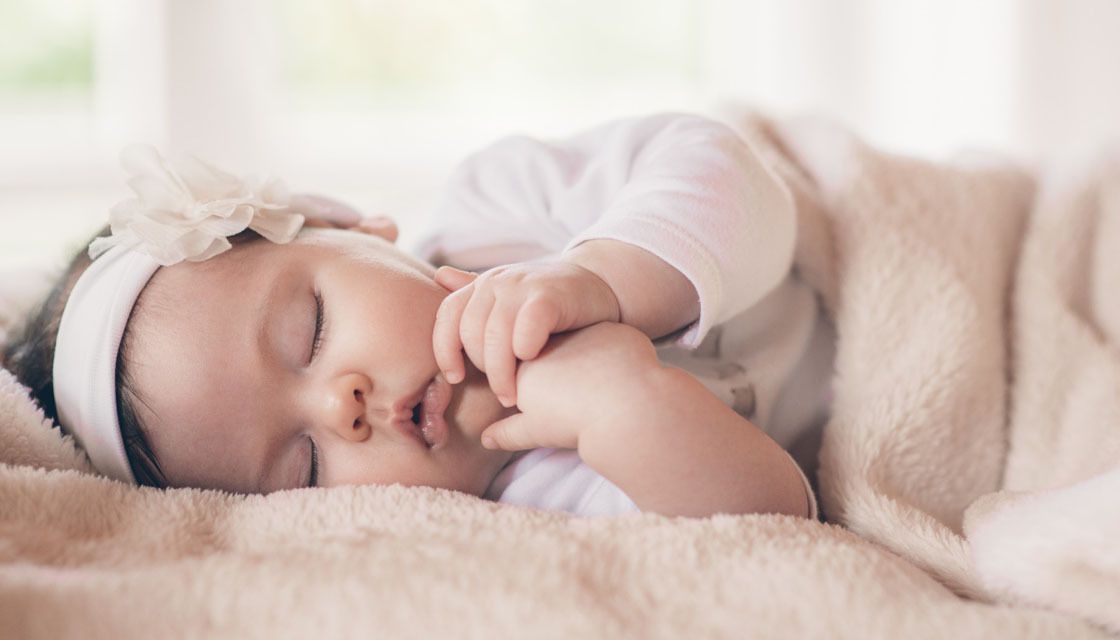
- If the child sleeps in a cool room, it is better to dress him warmly or put him in a special sleeping bag for babies. He should be warm, but not hot, so it is not recommended to wrap him with a blanket. And in order for the baby to breathe freely, in no case cover him with a blanket with his head.
Babies up to 12 months of age still need to feed at night, so sleeping in the same room with the mother may be necessary to optimize breastfeeding and closer contact 4 . Co-sleeping in the same room with parents does not mean that the child will sleep with them in the same bed, because it does not meet the safety requirements 4 .
Before putting your newborn to bed, also remember that:
- Tight swaddling is not recommended0036 4 . There are babies who find this soothing, but swaddling can interfere with the baby's breathing because the chest is compressed and the baby cannot take a deep breath.
 4 . Tight swaddling also increases the risk of a lung infection and can aggravate hip dysplasia. Do not swaddle a baby who is already rolling over from his back to his stomach 4 .
4 . Tight swaddling also increases the risk of a lung infection and can aggravate hip dysplasia. Do not swaddle a baby who is already rolling over from his back to his stomach 4 . - There is no consensus on the use of pacifiers. Some experts believe that they have a negative effect on breastfeeding and interfere with the formation of the correct bite. Other evidence suggests that pacifiers help reduce the risk of respiratory and cardiac problems in infants up to 12 months of age 4 .
- Don't encourage falling asleep in your arms or while feeding. Older babies do not need to be allowed to fall asleep while watching a movie, after a set time, or in their parent's bed 4 .
Back to content
How to help your baby fall asleep
As the baby develops, fears, anxiety, anxiety may appear when he refuses to sleep separately from his parents and resists falling asleep 2 . The maturation of biological rhythms is facilitated by the environment of the child, the behavior of parents, compliance with the regimen and rules of sleep hygiene 3 .
The maturation of biological rhythms is facilitated by the environment of the child, the behavior of parents, compliance with the regimen and rules of sleep hygiene 3 .
To ensure quality rest and proper development, parents need to follow the recommendations. Specialists advise following these rules 4 :
- Put the baby to bed in the evening and wake up in the morning at about the same time, despite weekends and holidays 4 .
- Avoid physical activity before bed 4 .
- Limit activities in bed that are not related to falling asleep (playing, feeding), as this interferes with the baby's understanding of sleep 4 .
- Keep the bedroom comfortable - moderate temperature, low lighting, minimal noise, comfortable pajamas 4 .
- Form a laying ritual 5 .
- Follow the diet - the baby should not have any hunger or overeating. Before going to bed, you can feed him a little 5 .

- Keep an activity diary so that you can analyze and understand what interferes with your child's sleep 4 .
Back to Contents
How can I get my baby to sleep in his own crib?
There are various methods to help a child fall asleep on his own, without the help of parents. They are often used as a non-drug treatment for insomnia (sleep disorder) in young children aged 1 to 3 years 4 . Examples of such techniques are described below. Choosing the right one for your baby should be discussed with a baby sleep specialist.
One way to overcome sleep disorders is through behavioral therapy. It helps to change wrong associations and sleep patterns in a child 4.7 . In behavioral therapy, the abandonment method is used. With him, parents immediately leave the child in the crib and leave the nursery. However, they do not return when they hear his cries or call, giving him the opportunity to fall asleep on his own 4 . But psychologists do not recommend using this approach if the baby is not yet 6 months old and is breastfeeding 4 , as this may adversely affect the baby's condition.
But psychologists do not recommend using this approach if the baby is not yet 6 months old and is breastfeeding 4 , as this may adversely affect the baby's condition.
In addition, the abandonment method is not suitable for all parents. For those who want to be near or calm a crying baby 4 experts recommend other methods - "check and hold" or "gradual repayment" 4.7 .
Back to Contents
"Checking and Holding"
When getting ready for bed, the parent spends some time with the child, then puts him to bed and leaves the room or goes to bed if she is in the nursery. At the same time, they do not approach the baby for 15-20 minutes and do not react to his crying or screaming. This period is called "hold" 7
When the 20 minutes have elapsed, the parent goes to the child, straightens his bed and returns to himself. This part is called checking 7 .
It is very important not to take him out of the crib and feed him when he wakes up. The exception is children who require night feedings for age or medical reasons. In all other cases, the parent simply comes to the crib for a short time to check, and then leaves again for a 15-20 minute “hold” 7 .
The exception is children who require night feedings for age or medical reasons. In all other cases, the parent simply comes to the crib for a short time to check, and then leaves again for a 15-20 minute “hold” 7 .
Gradually - over several nights - increase the "hold" interval to 30 minutes 7 .
Up to content
Gradual repayment
This technique is designed to “repay” the child's protests and manipulations 7 . There are 2 options for "gradual repayment" - with and without the presence of a parent 4 .
The classic option is to leave the baby alone in the bedroom for a certain amount of time, gradually accustoming him to fall asleep on his own. Unlike the “check and hold” method, the child can be calmed down. But you need to return to his bed not at the first call, but after a certain time. After the child calms down, you need to leave again, increasing the intervals when he tries to fall asleep without you 7 .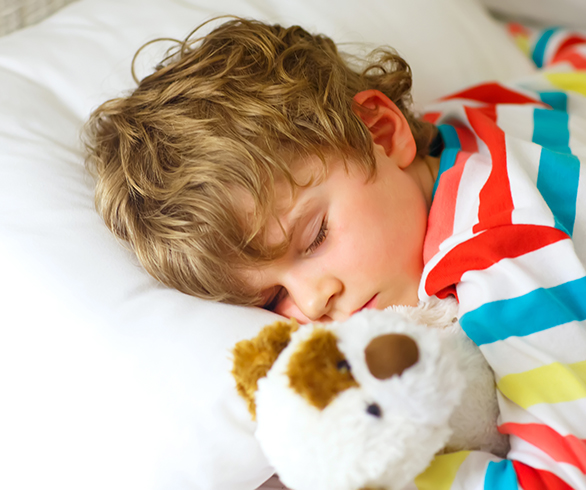 This option is suitable for babies over 6 months old 4 .
This option is suitable for babies over 6 months old 4 .
Until the age of six months, use the “gradual repayment” method in the presence of a parent. It is carried out in stages 4 :
- The parent puts the baby to bed and sits next to it. If the bed is large, you can lie down next to the child.
- On subsequent nights, mom or dad still stays close to the baby, but gradually reduces the number of touches, communicates less with him, showing him that they are busy with something, for example, reading or cleaning the room.
- When putting the child to bed, the parent does not lie down next to him, but sits on a chair not far from the bed, about 5 meters from it, continuing to sit until the baby falls asleep.
- In the next step, the distance between the bed and the chair is increased by gradually moving it away.
- A little later you can leave the nursery for a while, but be sure to return before the baby cries.

If the child wakes up, repeat the same steps that you perform at this stage of the procedure. The stages can be stretched over several days so that the baby has time to get used to each 4 .
Up to contents
Bedding rituals
Forming a bedding ritual is considered to be an effective method 4 . It can complement the "repayment" technique, but sometimes it works quite well on its own. Suitable for all ages, but the earlier it is started, the less likely babies are to develop sleep problems - they fall asleep faster and sleep longer 4 .
The ritual begins at the moment of the child's drowsiness. Before you put the baby to sleep, you need to perform a number of actions. They should be predictable, regular, relaxing and positive. The total duration of the ritual is 20-45 minutes 4 . If it was not possible to meet the set time, most likely, you need to shift the ritual to another time and wait for drowsiness. It can manifest itself as loss of interest in surrounding toys and people, reddening of the eyelids, rubbing of the eyes, yawning 4 .
It can manifest itself as loss of interest in surrounding toys and people, reddening of the eyelids, rubbing of the eyes, yawning 4 .
Back to Contents
What are the rituals for falling asleep?
Experts recommend preparing for sleep, which consists of consecutive, daily repeated actions, the so-called routines 5 . They help to speed up falling asleep, increase the quality and duration of sleep, reduce the number of night awakenings 5 .
The most typical nightly rituals 6 :
- Bathing in warm water with your favorite foam or bath product, light massage.
- Soothing sounds - "white noise". This is a monotonous noise that does not carry a semantic load, soothes and helps to forget, for example, flowing water, a metronome, ticking clocks or recordings of nature sounds.
- Lullabies and fairy tales.
- Wishes for "good night", "sweet dreams" or other phrases that are said only before going to bed.
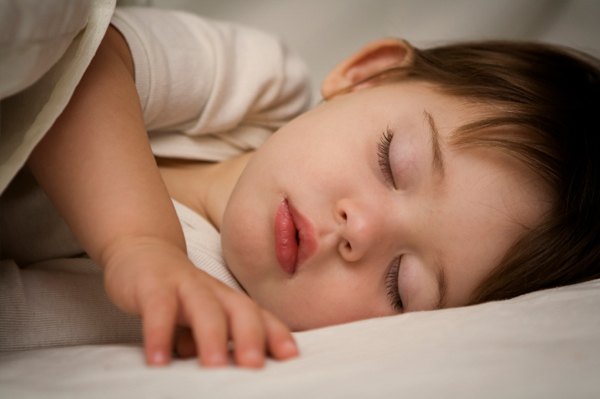
Sleep experts recommend a three-step ritual that includes bathing, massage and quiet time in the crib 8 .
- Bath foam can be used during bathing. For babies from 6 months, JOHNSON’S ® Baby Bath Foam "Before Bed" is suitable. It has a soothing scent to help your baby get ready for bed 8 .
- Immediately after a warm bath, a milk can be applied to the skin, such as JOHNSON’S ® Bedtime Milk 8 , for children over 6 months of age, by lightly stroking the skin. Such a massage will calm the baby even more and prepare him for sleep, especially thanks to the pleasant smell of milk 8 .
- At the third stage, you need to change the child into pajamas, read a bedtime story or sing a lullaby 4,8 .
As a rule, a few days are enough to form an association between the evening routine and falling asleep 4 .
As you can see, pediatricians and psychologists have developed various methods for healthy children's sleep and fast falling asleep. But you need to use them, taking into account the age of the child, his habits and characteristics of the nervous system. The task of parents is to organize the baby’s daily routine and prepare him for sleep, calming and creating positive associations with the process of falling asleep. With the correct implementation of the recommendations of a specialist, the child will gradually learn to fall asleep independently and faster, will sleep longer and sounder.
But you need to use them, taking into account the age of the child, his habits and characteristics of the nervous system. The task of parents is to organize the baby’s daily routine and prepare him for sleep, calming and creating positive associations with the process of falling asleep. With the correct implementation of the recommendations of a specialist, the child will gradually learn to fall asleep independently and faster, will sleep longer and sounder.
You may also be interested in:
Traveling with your baby
Baby's Skin Care Guide
Back to Contents
The information in this article is for guidance only and does not replace professional medical advice. For diagnosis and treatment, contact a qualified specialist.
References:
- E.S. Sakharova. What worries the baby? Pediatric pharmacology, 2010, volume 7, No. 2, pp. 143-148.
- I.A. Kelmanson. Formation of the state of sleep in ontogeny and the problems arising from this.
 Neurology and psychiatry. Special issue "Sleep and its disorders-5". Effective pharmacotherapy, 2017, No. 35, p.4-13
Neurology and psychiatry. Special issue "Sleep and its disorders-5". Effective pharmacotherapy, 2017, No. 35, p.4-13 - M.G.Poluektov, P.V.pchelina. Sleep in children: from physiology to pathology. Medical Council, 2017, No. 9, pp. 98-103.
- P.V.Pchelina. M.G.Poluektov. How to treat insomnia in early childhood. Neurology and psychiatry. Special issue "Sleep and its disorders-4". Effective pharmacotherapy, 2016, No. 19, pp.52-60.
- Jodi A. Mindell, PhD; Lorena S. Telofski, BA; Benjamin Wiegand, PhD; Ellen S. Kurtz, PhD. A Nightly Bedtime Routine: Impact on Sleep in Young Children and Maternal Mood. (The Nightly Sleep Schedule: Effects on Young Children's Sleep and Maternal Mood) SLEEP (Sleep), Vol. 32, no. 5, 2009. pp. 599-607.
- E.A. Korabelnikova. Treatment and prevention of insomnia in young children. Russian Psychiatric Journal, 2012, No. 3, pp. 62-70.
- M.G. Poluektov Sleep disorders in childhood: causes and modern therapy // Effective pharmacotherapy, Neurology and psychiatry.
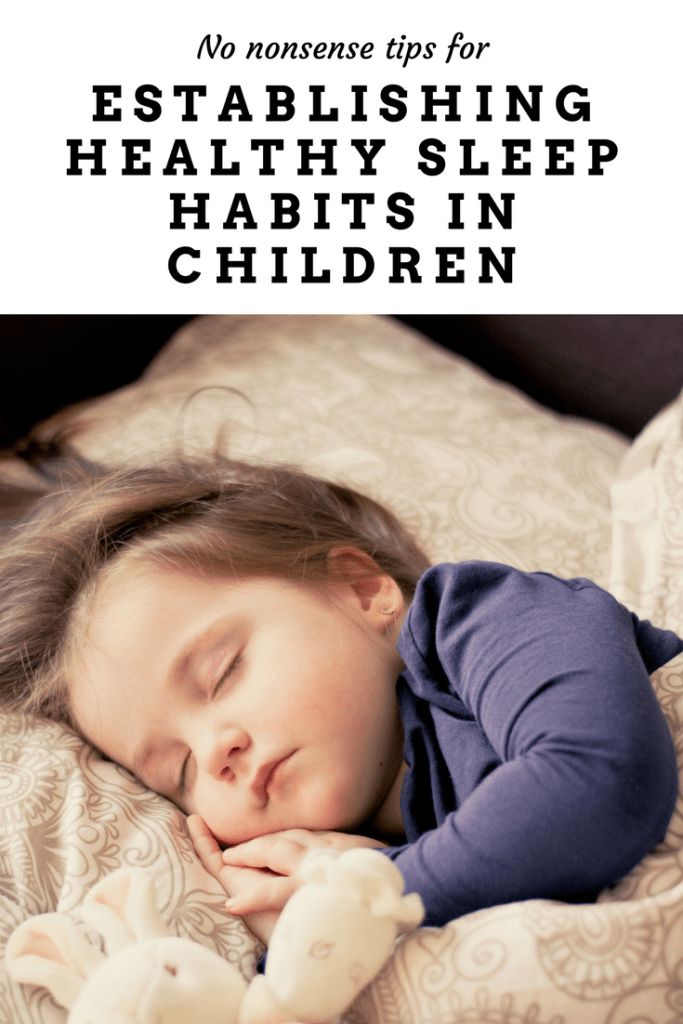 1/2012
1/2012 - Mindell J, Lorena S, Telofsky BA et al. Nightly sleep routine: effects on young children's sleep and maternal mood. Sleep. 2009; 23:599–606.
Up to content
How to wean a newborn baby to sleep only in the arms of his parents? Going from endless motion sickness to falling asleep on your own in a crib
How to wean a newborn baby to sleep only in the arms of their parents? Going from endless motion sickness to falling asleep on your own in a crib
The baby sleeps most of the time, but parents face difficulties in getting to bed. For many, motion sickness becomes a habit, the child sleeps only in his arms. It takes time and patience, parents get tired, they are interested in how to wean a baby from addiction.
Contents
- Causes of "manual sleep"
- Sleeps in arms during the day
- Is motion sickness necessary?
- Komarovsky about the problem
- What to do?
- Common errors
Causes of "manual sleep"
During childbirth, the baby experiences severe stress, gets into an aggressive environment and is forced to adapt to difficulties.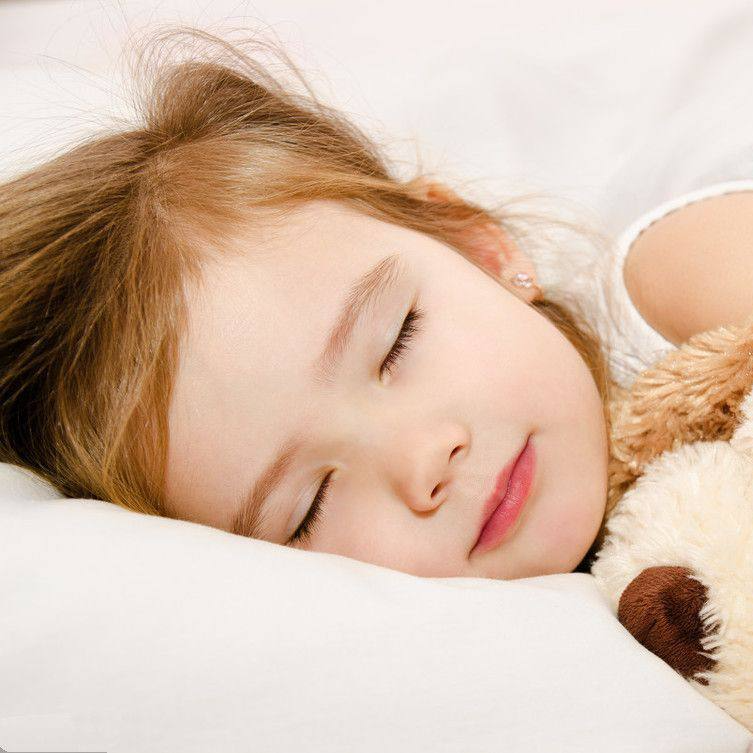 In his arms, he quickly calms down, falls asleep soundly and for a long time. The smell, warmth, mother's voice and the beating of her heart remind the newborn of the intrauterine environment, are associated with safety. Tactile contact is a natural need, it helps to strengthen the psychological connection.
In his arms, he quickly calms down, falls asleep soundly and for a long time. The smell, warmth, mother's voice and the beating of her heart remind the newborn of the intrauterine environment, are associated with safety. Tactile contact is a natural need, it helps to strengthen the psychological connection.
The closeness of the mother builds confidence in the outside world, has a positive effect on the nervous system and the overall development of the baby. It grows better, has a strong immune system. Touching helps the baby feel the significance, love of relatives. Psychologists recommend spending more time next to the baby before reaching six months.
It is important to understand why the baby sleeps only in mother's arms. The main reason is anxiety caused by various factors:
- Overexcitation - due to increased activity or characteristics of the nervous system;
- A tense situation in the family, quarrels - the baby subtly feels the negative;
- Discomfort due to uncomfortable clothing, cold or heat in the room;
- Extraneous sounds, bright light;
- Change of scenery, visiting relatives, traveling.

Being near the mother helps to calm down faster in case of pain, teething, makes the newborn feel better during colic and bloating.
Sleeps in arms during the day
After falling asleep in their arms, they become awake when trying to shift to the crib. Toddlers may refuse to fall asleep on their own for various reasons:
- Active games, activities before bedtime, leading to overexcitation of the nervous system;
- Hunger due to poor diet or reduced lactation;
- Absence of a daytime walk. Sometimes a child gets used to resting in a stroller on the street, and at home he sleeps during the day only in his mother's arms.
You need to rest at the same time to form a habit. You won’t be able to immediately refuse to fall asleep in your arms, you need to try to shift the sleeping person into the crib. You can wrap the baby in a diaper beforehand - this will reduce his sensitivity. Should be shifted during the deep sleep phase - the first 20-40 minutes. At the same time, the baby is motionless and does not wake up in the crib. The phase alternates with periods of REM, light sleep, when the baby is easily awoken.
Should be shifted during the deep sleep phase - the first 20-40 minutes. At the same time, the baby is motionless and does not wake up in the crib. The phase alternates with periods of REM, light sleep, when the baby is easily awoken.
Sling
A baby sling can be a way out, freeing mom's hands for household chores. But convenience is relative: the position of the child is different from normal, constant movement makes sleep superficial and reduces its quality. Many are laid next to them on an adult bed, if it is convenient for mommy to fall asleep with a child in the daytime.
Extraneous daytime sounds
Parents advise to lie down in the background of noise, which is not always acceptable. The option is optimal up to 3 months, when children sleep in any conditions. During intrauterine development, they were constantly accompanied by sounds similar to a working vacuum cleaner. After birth, out of habit, they fall asleep better in the background of noise.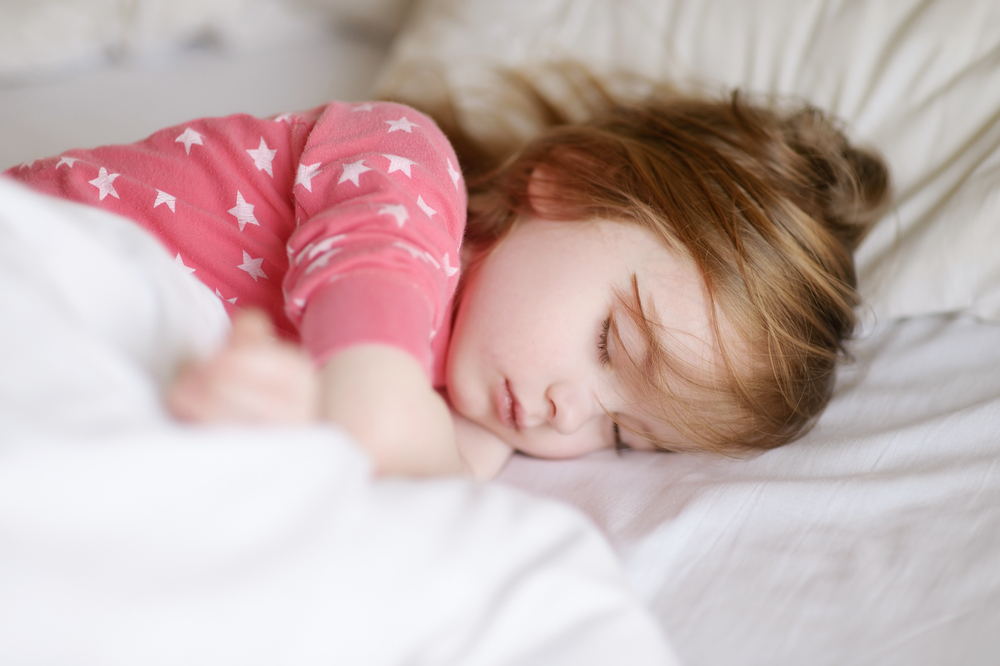 After three months, the child's body is rebuilt, extraneous sounds begin to irritate. At this time, it is necessary to ensure silence for a full fall asleep.
After three months, the child's body is rebuilt, extraneous sounds begin to irritate. At this time, it is necessary to ensure silence for a full fall asleep.
Is motion sickness necessary?
Many experts do not recommend rocking a baby because of the negative impact on the development of the vestibular apparatus. Uniform movement has a hypnotic effect, the baby falls asleep faster. Sickness in the arms often becomes a habit and the reason for the refusal to fall asleep in the crib. The alternative in the form of a cradle also forms an addiction. If you stop rocking a sleeping child, he may wake up. Parents are forced to spend time and effort, and later nerves, trying to wean the baby from this habit.
Komarovsky about the problem
Dr. Komarovsky explains that falling asleep in arms is harmful primarily for parents, speaks of a lack of patience and willpower on their part. The need to sleep is natural, long whims speak of additional annoying factors that need to be eliminated.
Many parents take a crying child in their arms instead of finding out the reasons for his dissatisfaction. Komarovsky recommends optimizing the lifestyle of the baby so that he falls asleep on his own.
What to do?
How to wean him from the habit of sleeping on his hands? It is necessary to gradually select other ways of interaction. A few recommendations:
- Swaddle until one month old. A newborn child does not control his movements, in a dream he may be afraid of his hands;
- Properly organize a place to rest. Dress and cover according to the environment. It is necessary to eliminate irritants in the form of a working TV, bright lighting, street noise penetrating through an open window. In the daytime, close the curtains tightly to black out;
- Pick up more often when awake. Use this time to study at home, when the baby begins to actively explore the world around him. This will help to gradually move away from the “hands-falling asleep” association;
- Talk affectionately, sing a lullaby so that the baby feels the closeness of the mother.
 At first, maintain tactile contact by holding a hand near or gently stroking it. Gradually reduce the time, the baby will learn to fall asleep on its own. You can put your mother's thing in the crib, the familiar smell will soothe the baby;
At first, maintain tactile contact by holding a hand near or gently stroking it. Gradually reduce the time, the baby will learn to fall asleep on its own. You can put your mother's thing in the crib, the familiar smell will soothe the baby; - Come up with a ritual for falling asleep: a bath with herbs, a relaxing massage, reading a book or a lullaby. Calm music will do;
- Avoid active play for 30-40 minutes before bedtime. Adhere to the rest regime, put the child at the same time every day;
- Watch the baby, remember under what conditions he quickly fell asleep in a crib without a mother. Learn to distinguish manipulation from crying for other reasons. In case of pain, children do not calm down in their arms for a long time, if the need is only for attention, they fall asleep almost immediately.
A child older than six months should be explained in a calm and reasonable tone that they need to sleep separately. Then try to put to bed without interrupting tactile contact and affectionate conversation. In case of strong crying, pick it up again, repeat the steps. It may take several attempts until the baby calms down.
In case of strong crying, pick it up again, repeat the steps. It may take several attempts until the baby calms down.
Common mistakes
Falling asleep in your arms leads to a lack of time, a decrease in the quality of mother's sleep. As the weight of the baby increases, the load on the joints and spine of an adult increases. This takes parents to extremes.
Negative
Dissatisfaction, anger at the child or the current situation. Negative emotions are transmitted to the baby, aggravating his condition. An adult should be able to cope with a bad mood and look at things positively. The psychological and physical health of the baby depends on this.
Sudden change in upbringing tactics
Sharp weaning from hands - deprives the child of the necessary caress and is a great stress. It is necessary to act gradually, to select alternative ways of laying, at first to be near the crib.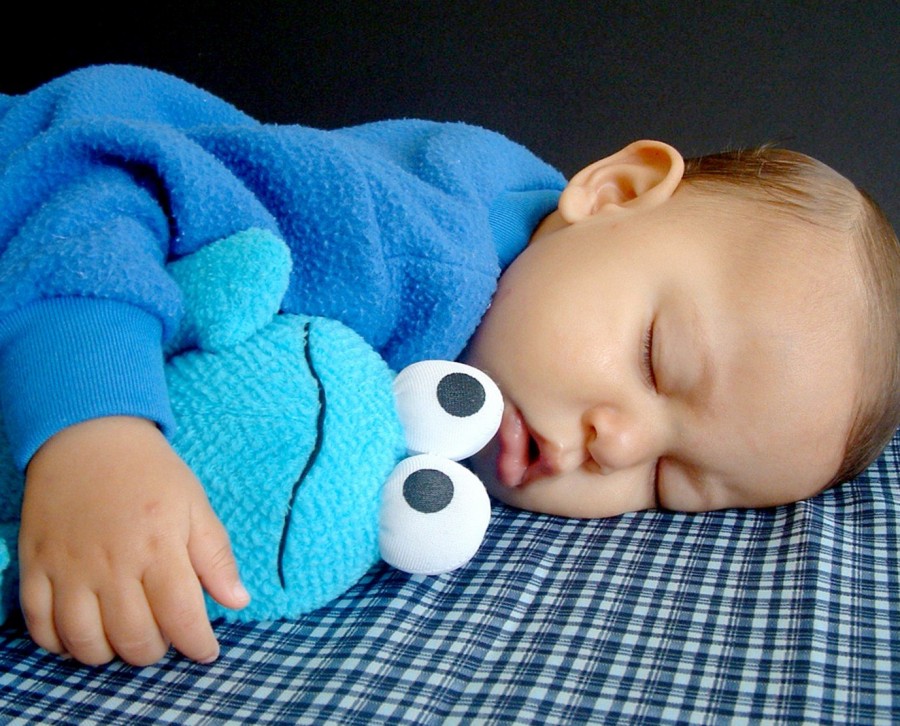
Loneliness
Leaving a screaming child alone for a long time. The technique was proposed by the American pediatrician Benjamin Spock, who admitted his mistake. The baby really screams less and less, gradually gets used to falling asleep on his own. At the same time, he experiences great stress, causing nervous disorders in the future. The healthy formation of a psycho-emotional connection with the mother is disturbed.+
0003 Co-sleeping - suitable for newborns and premature babies. This can be dangerous for the baby, requires sensitivity from adults. If co-sleeping develops into a habit, parents will face the baby's fear of sleeping separately. This will take time to unlearn and become a new stress. Many parents pick up the baby if he makes sounds when he is sleeping. It is better to wait a couple of minutes, the baby can calm down by himself. If the crying intensifies, then there is a significant reason: discomfort, pain or hunger, they must be eliminated.


